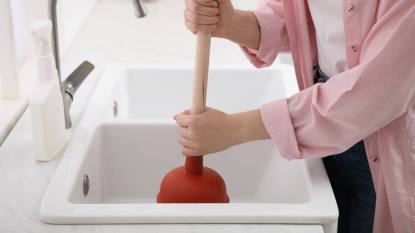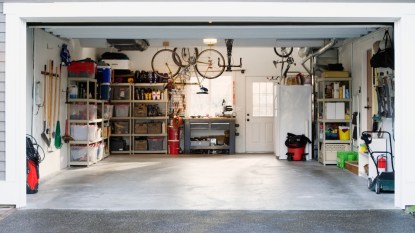The Tension Rod Shelf Secret — and 8 Other Genius Ways To Organize a Small Pantry
We tapped 4 home pros for their very best advice on optimizing space where you need it the most
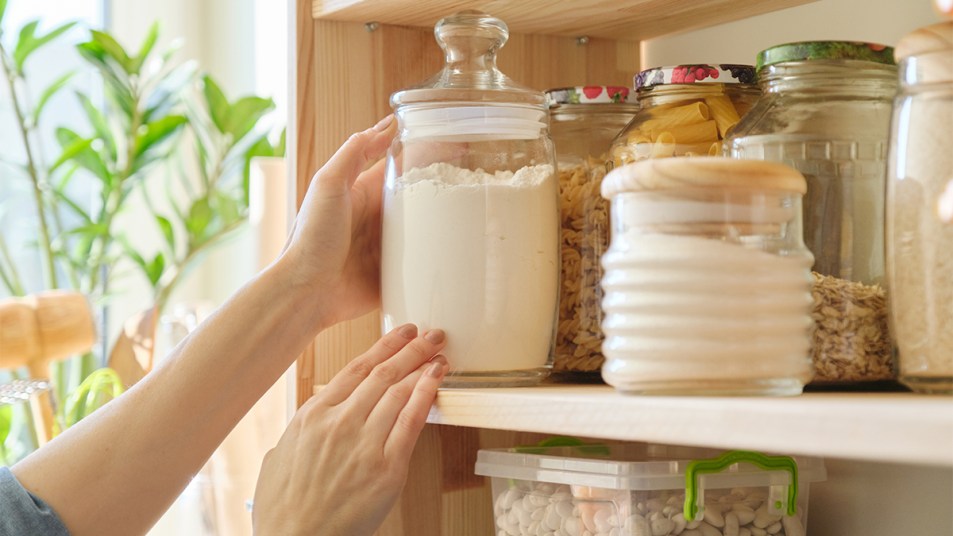
The pantry, especially when full, is easily one of the most challenging spots in the home to keep organized. Food is often stashed in a hurry or rummaged through, which can quickly lead to a mess. Plus, a pantry in a state of chaos can lead to wasting money by doubling up on ingredients you didn’t realize that you have or letting perfectly good food expire because you couldn’t see that it was there. Thankfully, there are ways to make even compact pantry spaces much more tidy and efficient for food storage in no time. Below you’ll find pros tips on how to organize a small pantry and savvy tricks to create more pantry space.
How to organize a small pantry: 5 secrets to adding more space
Before you start figuring out how to better make use of your space, do a sweep of your pantry, recommends Dorothy Breininger, organizing expert and host on A&E’s Hoarders. This involves pulling everything out so you can see it all and setting aside items you no longer need or want that can go to your local food bank.
This is also the time to do what she calls a pantry wedding. “In other words, ‘marry’ the already opened bags of noodles with other bags of noodles or combine two sugar bowls into one.”
Next, there are ways to make the most of your space by being mindful of how and where you store certain items. Try three of our favorite tips below:
1. Clip up seasoning packets
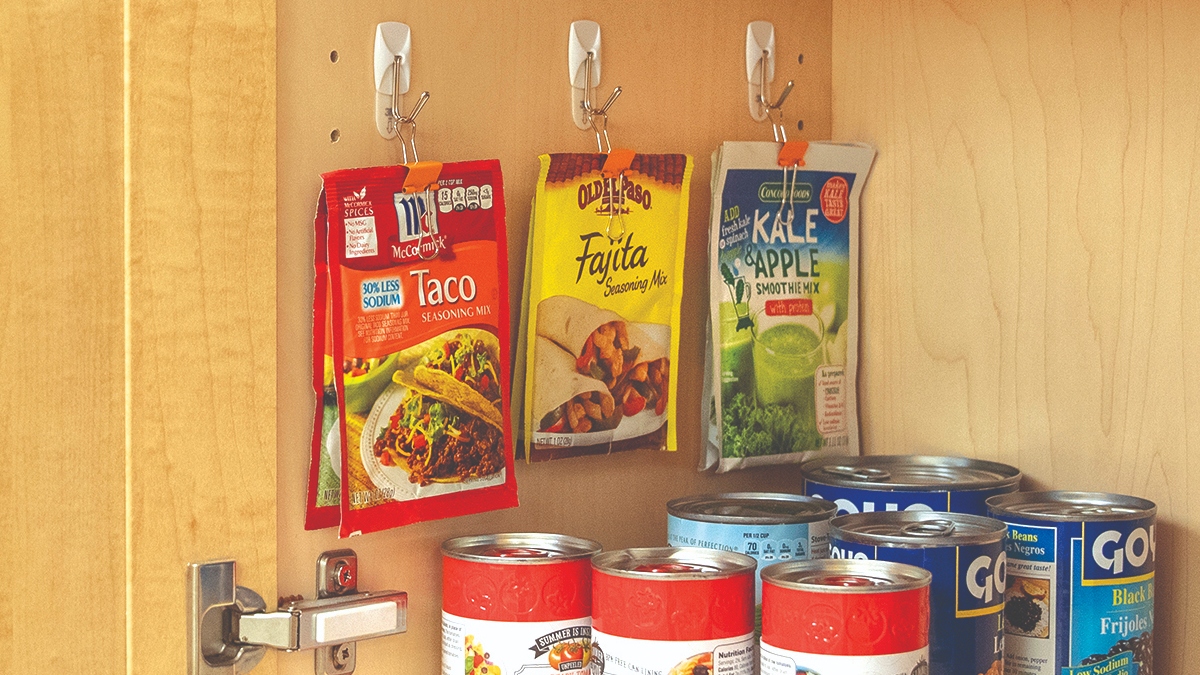
“I love Command Hooks for every part of the house including the pantry,” shares Breininger. “Using hooks helps to display seasoning packets — no hunting or searching and makes use of the un-used vertical space in the pantry.” This works for small resealable bags filled with spices or even small snack bags. To do: Simply hang a small binder clip from the adhesive hooks and clip the packets to them.
2. Upcycle a six-pack for foil boxes
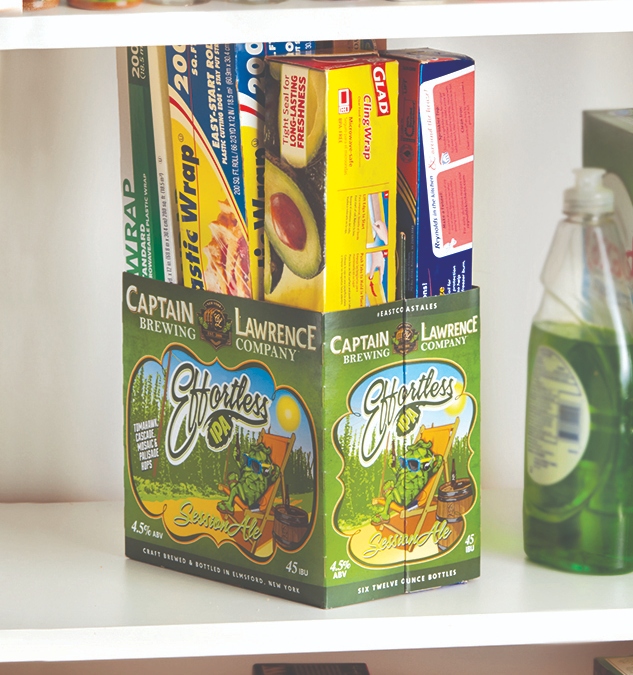
Boxes of aluminum foil, plastic wrap and parchment paper can easily end up in a big jumble and take up extra shelf space. The solution to organizing in a small pantry: Store them in a cardboard six-pack container!
“This idea works on a shelf of any height,” comments Breininger. “If your shelves have enough space between them, you can stand this cardboard 6-pack container upright as shown. However, if your shelves don’t have a lot of space between them, you can lay the container down and the system still works!”
Tip: if you notice the container is a bit unbalanced, make sure you spread out the heavier boxes (like a new box of aluminum foil) on opposite sides.
3. Place small spices on a tension rod
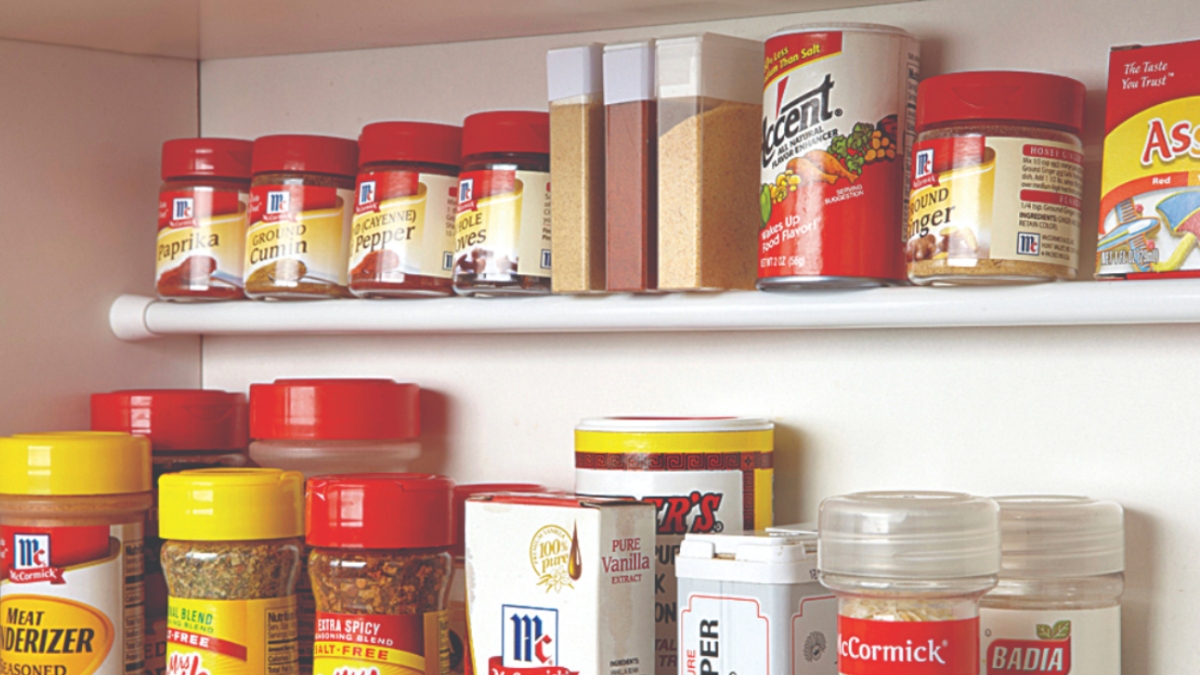
It can be quite easy for spices to pile up on a shelf — and the little guys get lost. The save: Hanging a tension rod in a cabinet creates a handy ledge for those smaller containers.
“A tension rod is truly a space enhancer — it’s like doubling your shelf space!” says Breininger.
But be careful not to overload it: “These rods are intended for curtains which are lightweight,” she adds. “If the rod is overloaded, it’s a crash boom in the cupboard and requires another round of getting organized.” (Click through for another genius tension rod hack and small closet storage ideas.)
Related: Genius Tension Rod Hack Makes Your Winter Gloves and Hats So Easy to Find
4. Get rid of bulky bags and boxes
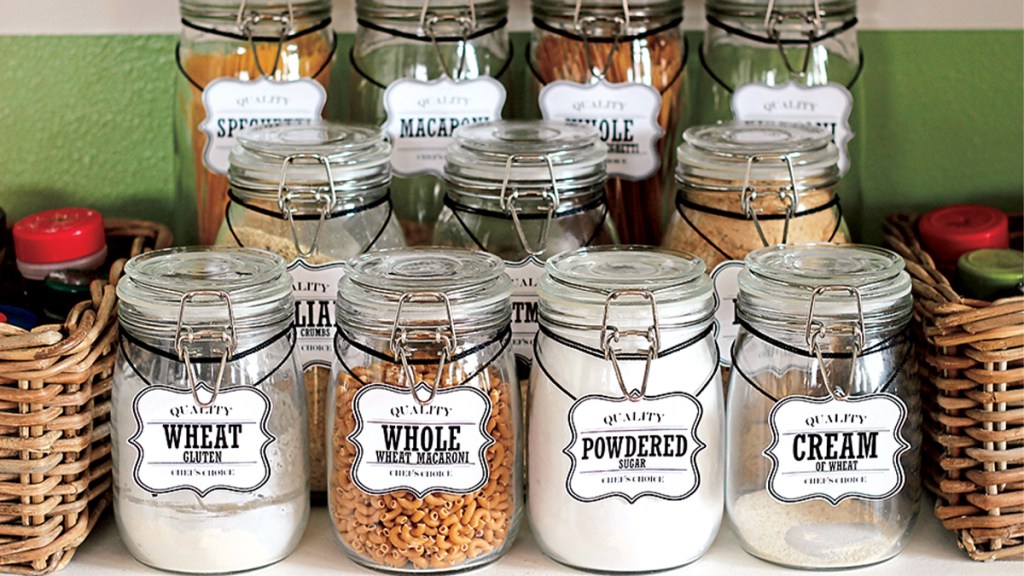
Removing pantry items from their packaging and storing them in glass jars can free up 30% more space. “Plus, transferring dry foods like rice or beans from boxes to jars with an airtight seal keeps them fresher for longer and allows you to take inventory easily,” says professional organizer Rachel Rosenthal. “The jars work like visual grocery-shopping cues.” Simply transfer food into jars, then stick on a DIY label and jot down the “use by” date, if needed.
Tip: Using different size jars and arranging from small to large, front to back, makes it a snap to zero in on whatever you’re looking for!
5. Bundle bottles vertically on a wine rack
Large bottles of water and seltzer are prone to tumbles, spills and shake-ups, plus lining them up takes up valuable shelf space. Sidestep the mess with scallop-tiered acrylic wine racks like IEEK 4 Pack Stackable Wine and Water Bottle Holder (Buy from Amazon, $27.99). Each one evenly distributes the weight of the bottles, keeping them secure and within reach. And, stacking them vertically leaves more room for other items.
How to organize a small pantry: 4 secrets to optimizing space
Once you’ve made some room on your pantry shelves, it’s time to focus on how to arrange your food items.
1. Create zones using *this* simple system
As part of The Gabai Principles that Nicole Gabai, founder of B. Organized and author of The Art of Organizing: An Artful Guide to an Organized Life, created, she suggest prioritizing frequently used items and keeping them in Zone 1, the most accessible area. Then items you don’t use as often should go into zones 2 or 3. “So, in a pantry, place the most-used items at eye level with the less frequently used zone 2 items higher up,” she explains.
2. Group items by kind and size
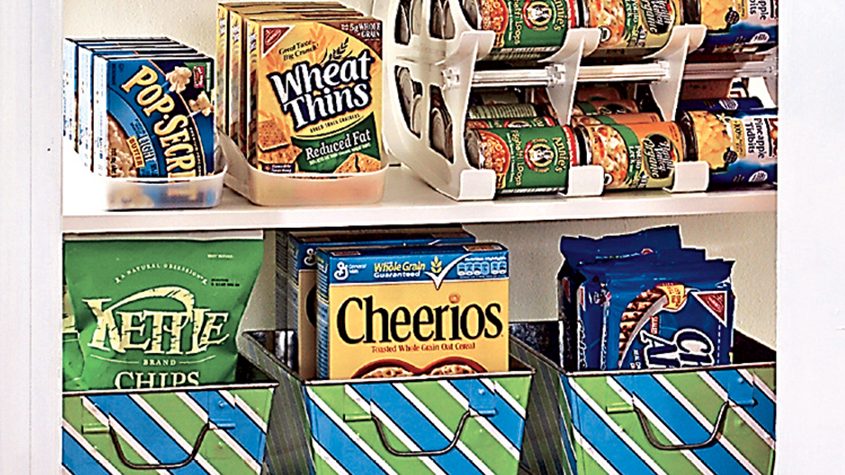
Deep pull-out shelves are helpful for sorting items, but when that’s not possible, Gabai suggests opting for side-by-size open boxes to create categories of food.
“Group all like-items together and label your boxes clearly in large letters on the front so that it’s easy for everyone to find what they need,” she adds. This could be something like “savory snacks” or “sweet snacks.”
Related: The Best Ways to Organize Containers With Lids — In Whatever Space You’ve Got
3. Sort items by expiration date
Besides creating sections of food (like canned goods, grains, baking ingredients, etc.), you’ll also want to create a system for older items. “I use a simple stock rotation to ensure that my food is consumed before it expires by putting the oldest jars or containers at the front, and also by keeping an ‘almost expired’ section, to categorize products which are approaching expiration and I need to use quickly,” explains Zoe Bingley Pullin, a nutritionist, chef and Health Ambassador, who knows her way around a kitchen pantry. “It’s also a great way to come up with recipe ideas based on what’s about to expire.” Pullin emphasizes that your pantry should be dry, cool and dark. Food should also be stored in the coolest cabinets away from any hot appliances, as high temperatures speed up deterioration.
4. Locate items in flash with a Lazy Susan
A Lazy Susan is a fantastic way to access certain items — like spices — that might otherwise get lost in the back of your pantry. “Because the Lazy Susan spins, you have a chance to see everything — nothing is hiding and spices are always findable,” comments Breininger.
Even more good news? You can create your own with just a few simple items:
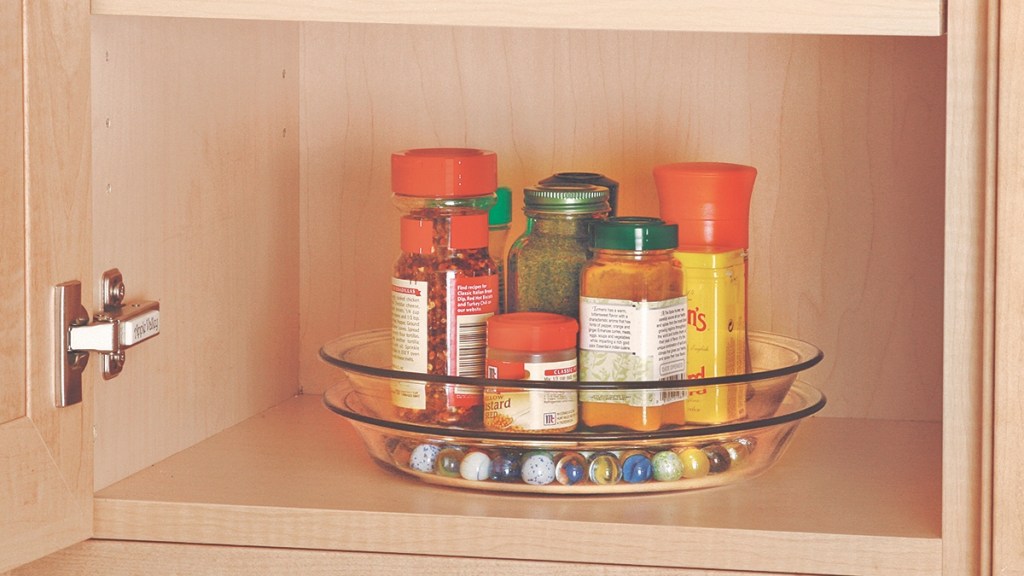
Simply place a handful of marbles in a glass pie plate (making sure they’re all a uniform size) and set another pie plate on top. Then place the spices you regularly use on top of the second pie plate. The marbles will allow the plate to spin so you can grab the jar you need in a snap.
Another way to locate items you need in a flash? Stick with clear containers when possible. For examples, consider re-using glass jars for nuts, candies, lentils, coffee, oats and sugar. Says Breininger. “Food items are much easier to find when they are in a see-through container. Plus, they look stylish and the jars are usually air tight.”
Related: The File Folder Hack That Keeps Your Linen Closet Organized + More Brilliant Tips
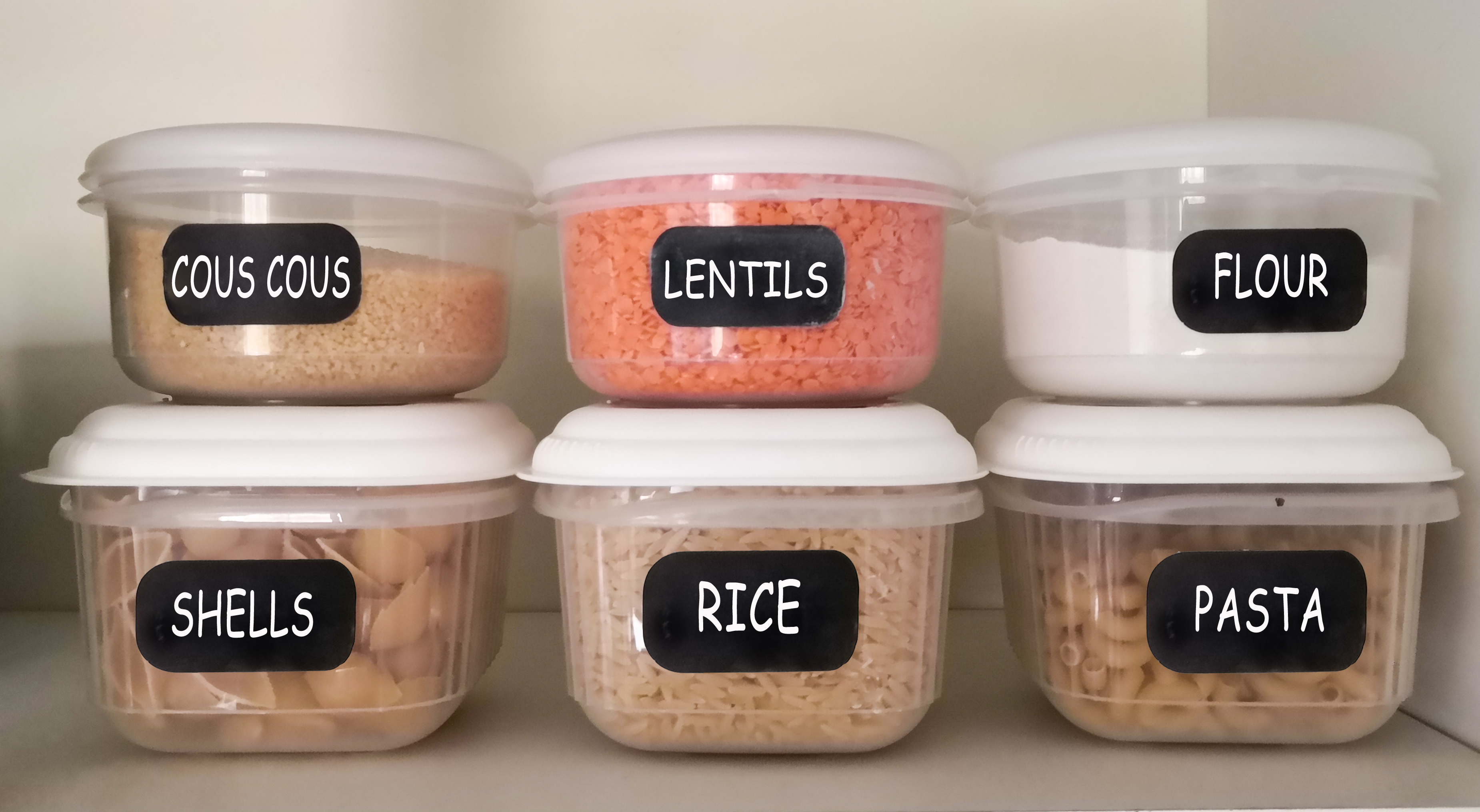
How to organize a small pantry: 3 mistakes to avoid
When space is limited in a pantry, you’ll want to make sure everything is well organized and stored as efficiently as possible. But there are a number of things that can make this difficult to achieve.
1. The lack of a step stool can lead to overstuffing
Not having a step stool handy that will allow you to access higher shelves can be an issue. “If you have to find a chair or go get a step ladder, you are less likely to put the item away in its proper place (which causes overstuffing the lower shelves),” says Breininger. “Using a step stool with wheels is a great option because you can move it around with your feet if your hands are full.”
2. Poor lighting can lead to duplicates and mess
Poor lighting can make it tough to see what items you already have, Breininger adds, which can lead to buying duplicates you don’t need.
And dimly lit spaces are prone to getting messy, while well-lit areas stay tidier. Luckily, it’s easy to brighten any spot with stick-on battery-run puck lights (at hardware stores) on a wall or under a shelf.
3. Holding on to expired or once-used items can lead to clutter
“Many of us keep ingredients and food that are past their use-by date, as well as hang on to a collection of miscellaneous ingredients from recipes that have been used once and now are taking up room, collecting dust in your pantry,” says Pullin.
She recommends removing all ingredients, sauces and spices that are expired or out of date and then consider the last time you used them. “If you can’t remember, you most likely won’t use it again, so give it the toss,” adds Pullin.
For more kitchen organizing tips, keep reading:
Need More Room for Cooking? Use These Hacks for Maximizing Kitchen Space
Get Your Kitchen Clutter Under Control With 5 Long-Lasting Tips
How to Conquer Cabinet Clutter and Organize Your Kitchen Today










